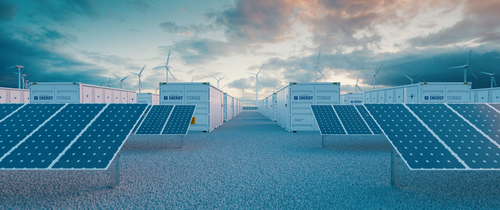The National Solar Mission in 2010 set an ambitious target of achieving 20 GW of power by 2022. However, today India ranks third globally in terms of solar production and capacity with a total installation of 116.25 GW, as of July 31, 2025, according to the Ministry of New and Renewable Energy. India plans to continue its efforts to reach 280 GW of solar energy, thus contributing to its overall target of 500 GW of non-conventional energy by 2030.
India is among the leading countries having a direct normal irradiance of 4 to 7 kWh/m²/day and is estimated to have huge potential for solar energy which is about 5,000 trillion kWh per year. It has an average of 250–300 clear sunny days and 2,300–3,200 hours of sunshine per year. Theoretically, India’s electricity needs can be met on a total land area of 3,000 km square which is equal to 0.1 per cent of total land in the country. Since 2010, the cost per unit for solar power in India has significantly fallen from Rs 17 to Rs 3, making it the one of the cheapest rates in the world. With a payback period of 4 years, 40 per cent accelerated depreciation for income tax, various financing options, and competitive pricing due to plethora of vendors, India is poised to achieve its renewable targets.
However, there are several factors, mainly government policies and price-sensitive consumer base that are hindering our solar growth. Recently, Maharashtra Electricity Regulatory Commission (MERC) introduced a new policy for open access consumers. The policy states that any excess generation in solar Time of Day (TOD) slot (9am-5pm) can only be utilised in the same slot. Whereas the previous regulation stated that excess energy generated in solar TOD slot (9am-5pm) can be utilised in the same and cheaper TOD slots. This restricts solar usage from 20 hours a day to 8 hours a day, around 60 per cent reduction in usable banking time.
Due to this change in regulation, it is the consumer who bears the brunt. This presents an opportunity for energy backup/ storage devices such as diesel generators (DG) or a battery energy storage system (BESS). A BESS has zero emissions, requires minimal maintenance, has a higher efficiency (80 per cent – 90 per cent) and can be integrated with solar. Indian consumers are price sensitive, and therefore some are averse to high upfront costs of solar battery installations.
However, in the commercial and industrial segment of the market, where upfront investments are made via capex or opex mode, like is done in case of a solar installation, the shift from diesel generator sets to BESS systems coupled with solar are on the rise. As BESS systems have a life of 8-10 years, the savings when compared to diesel consumption are compelling. Further, with international and MNC customers under pressure to go green, solar and BESS hybrid systems can deliver clean power 24×7.
In 2023, the government implemented a National Framework to promote energy storage systems. The energy storage capacity required for 2029-30 is likely to be 60.63 GW (18.98 GW pumped storage projects (PSP) and 41.65 GW BESS) with storage of 336.4 GWh (128.15 GWh from PSP and 208.25 GWh from BESS). Although there is no uniform national policy on DG set replacement with renewable energy and storage, states are developing their own regulations and incentives to encourage this transition. For instance, MERC has introduced regulations for grid-connected renewable energy projects, which can incentivise the replacement of DG sets with renewable energy and storage.
Despite new-age DG sets offering improved fuel efficiency and lower running costs, their overall cost is unlikely to decrease significantly due to rising material and fuel prices, as well as stricter carbon emission norms. On the contrary, the plunging prices of batteries are making them more affordable. Battery prices have fallen significantly from $708 per kWh in 2013 to $115 per kWh in the beginning of 2025, a reduction of around 84 per cent. Due to intermittency issues with renewable energy, DG sets will continue to remain an active continuous electricity supply is critical. However, going forward, with stricter regulations and reduction in prices of storage batteries, we expect a more widespread transition from DGs to BESS.
Traditionally, India’s power grid relies on centralised generation plants—large coal, gas, and hydroelectric power stations that transmit electricity over long distances to reach consumers. This system is prone to inefficiencies due to transmission and distribution losses, which can be as high as 20-25 per cent in certain regions. The grid infrastructure faces challenges in efficiently transmitting solar power as well due to a combination of inadequate transmission capacity, fluctuating renewable energy output, and the intermittent nature of solar power. Independent solar production can mitigate these issues by decentralising power production.
With more businesses generating their own electricity, distributed power generation has eased the peak mid-day transmission demand on the grid. However, the evening-night peak demand is still a struggle in most states. During this time-period, BESS can play a vital role in successfully storing excess generation in the day that will be consumed during peak periods, easing energy demands.
India’s transition to clean energy is no longer limited to generation—it now hinges on reliable storage. From a techno-commercial perspective, a feasible solution to achieve net zero emissions and cater to peak energy needs is Solar + BESS. This hybrid model ensures round-the-clock power while aligning with sustainability goals. The future of energy security in India lies in decentralised, low-emission, and storage-backed solutions.


